The Medieval period wasn’t all about fighting – most people lived reasonably peaceful lives, with very much the same preoccupations of life and love as we do today. But Medieval society was undoubtedly more violent than our modern world. Arbitrary violence from greedy lords seeking their taxes and tithes, invasions and raids, and constant dynastic wars touched the lives of ordinary people. These wars necessitated the constant search for innovation. Some of these are familiar to us, like plate armor and the crossbow. But some avenues of innovation produced very strange weapons indeed. As we’ll see, they all had their own reasons for existing, and their own strange logic. But there’s a reason why they’ve remained Five of the Weirdest Medieval Weapons!
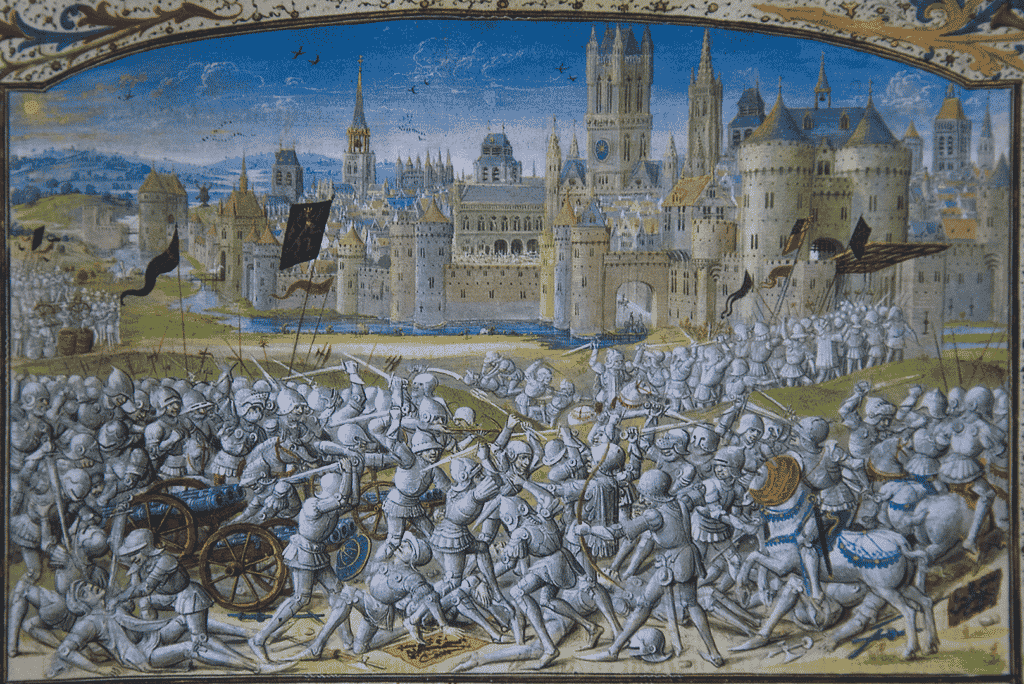
1. The Goedendag – An Artisan’s Knight-Stick
The goedendag was a short, thick wooden halt, between three and five feet in length, tapering at one end. The thick end had an iron collar or ball, with a short spike set into it. It is usually described as a combination of a spear and a cudgel – and it was the terror of the French aristocracy at the turn of the 14th century.
The Kings of France had held nominal overlordship over the County of Flanders since the days of the Carolingian Empire – but in practise, their cities exercised a great degree of independence. They were some of the most highly urbanized, industrialized areas in Europe: cities like Douai, Ghent and Lille produced and sold fine textiles for export all over Europe, the first serious pan-European industry since Roman times. However, for King Philip IV of France, this independence burned a hole in missed tax revenues. Philip invaded Flanders in 1297 CE, sweeping aside the Count of Flanders and his feudal armies with ease, partly because the proud cities of Flanders offered the Count only token support in an attempt to preserve their independence under the inevitable royal military occupation. However, Philip’s installed governors squeezed Flanders’ cities for all they were worth – and quickly, the urban guild workers in the cloth trade were covertly organizing their own rebellion.
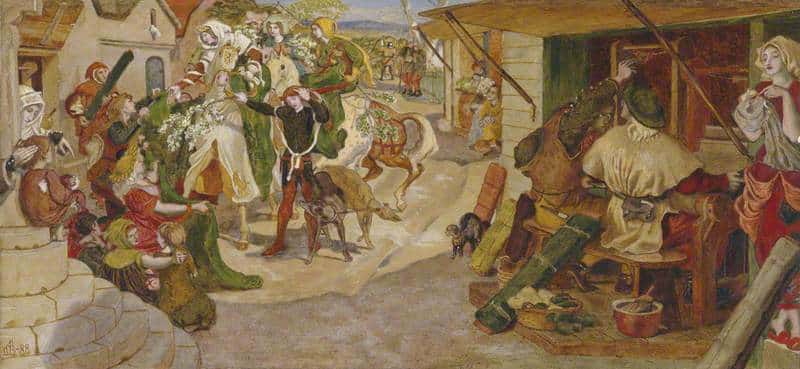
But fighting the French would be an uphill struggle. This period of history is known as the age of ‘transitional armor’ – where coats of maille were increasingly insufficient to deal with Late Medieval warfare, and were giving way to new forms of armor such as splint-armor, brigandines and even early plate armor. But these were all extremely expensive: think of a suit of armor like the tanks of their era, only accessible to tremendously wealthy nobles. Most of the Flemish guildsmen could only afford simple armor like a steel helmet and gauntlets, and peasant weapons like pikes and crossbows. Many couldn’t afford even maille armor. Thus, when going up against the armies of the wealthy French nobles, they had to get creative.
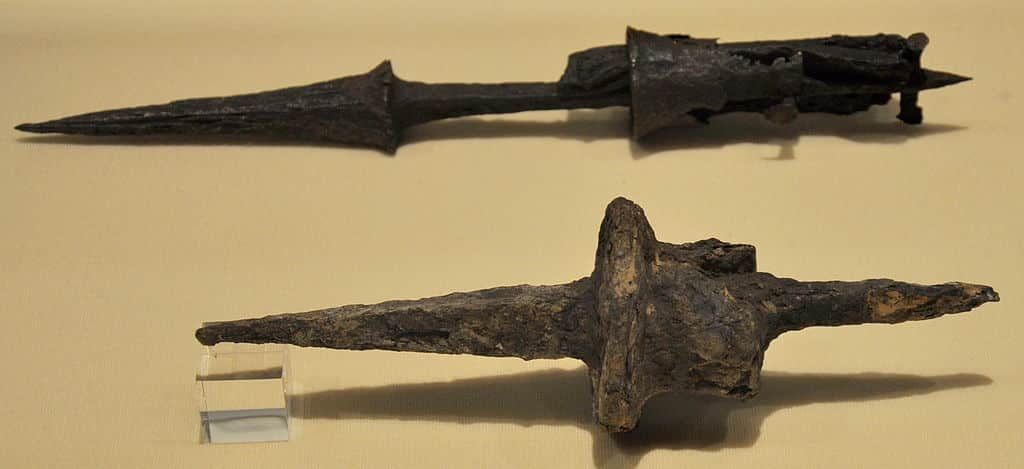
The Flemish militias invented the spiked goedendag club especially as a knight-killer. Contemporary reports describe the club being used in a versatile manner: like a spear or pike, planted at the feet and angled upward to present a hedge of points to a charging knight, then clobbering the knight from his horse with hefty smacking blows with the thick end of the staff, and then using the spike to finish the downed knight off by finding the weak points in their armor. The club gets its unique name, which means ‘good day’ in Dutch, from its fearsome reputation as a weapon of anti-French terror: legend has it that Flemish partisan militias would greet civilians, and if they answered in French or with an accent, they would be clubbed to death. The uprising against the French armies was signalled by the ‘Matins of Bruges’, a massacre of French troops and pro-French civilians in which as many as 2,000 people fell to the goedendag in a single night.
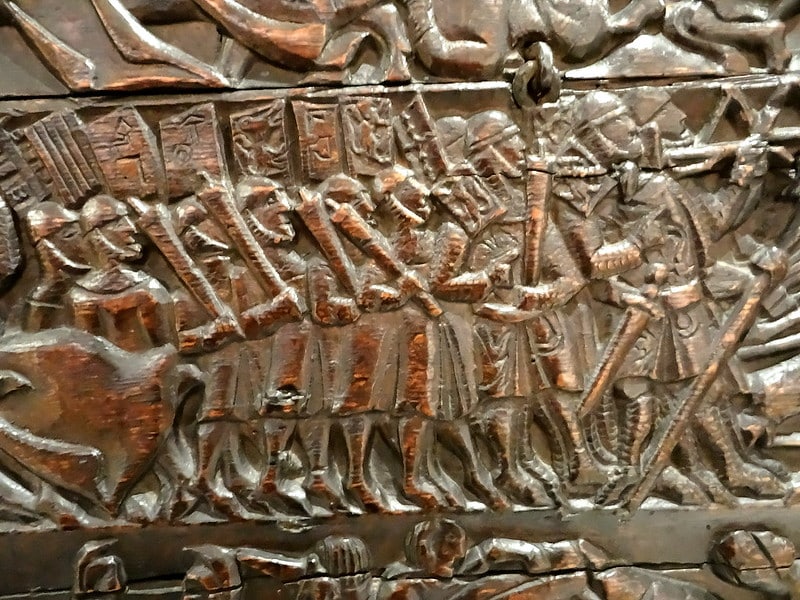
The heyday of the goedendag was the Battle of the Golden Spurs, fought on July 11th 1302, when a force of ill-equipped Flemish militia faced off against a noble French army. The French force consisted of around 2,500 armored knightly cavalrymen, as well as another 5,000 footmen – the Flemish, though of roughly equal numbers, by contrast had virtually no cavalry (as few as only a dozen according to some sources!). Cleverly, the well-organised Flemish forces backed themselves into a marshy bend of a river to dull the French’s cavalry advantage – the goedendag proved the ideal weapon for this mucky fighting, with the Flemish militia dragging the bogged down cavalrymen from their horses, resisting charges with a hedge of spiked clubs, and driving the French from the field. More than a thousand French knights perished, as against only a hundred Flemish. The battle is so named for the 500 pairs of spurs that were scavenged from the fallen knights and displayed in the Church of Our Lady in Kortrijk. Historians see the Battle of the Golden Spurs as inaugurating the ‘infantry revolution’ of the Late Medieval period, when poorly-equipped levies began to develop ways to make the armored knight obsolete – at the spear-point of the goedendag.
2. The Gun Shield – Why Choose?
Gunpowder weaponry first appeared in Europe in the early 14th century, with primitive hand cannons and bombard proto-artillery that would propel chunks of stone over town walls. But by the 1500s, things had come a long way. Matchlock guns like the arquebus had become a battlefield staple, with mixed pike-and-shot infantry tactics coming to dominate over the tried-and-tested knightly noble cavalry. Some European monarchs reacted with horror at this new military world – a peasant with a gun?! Whatever next! – whereas some embracedthe brave new world. Gun manufacture spread across Europe, with locksmiths particularly well-placed to adapt their craft to making these new weapons – hence why we call gunpowder firing mechanisms ‘locks’.
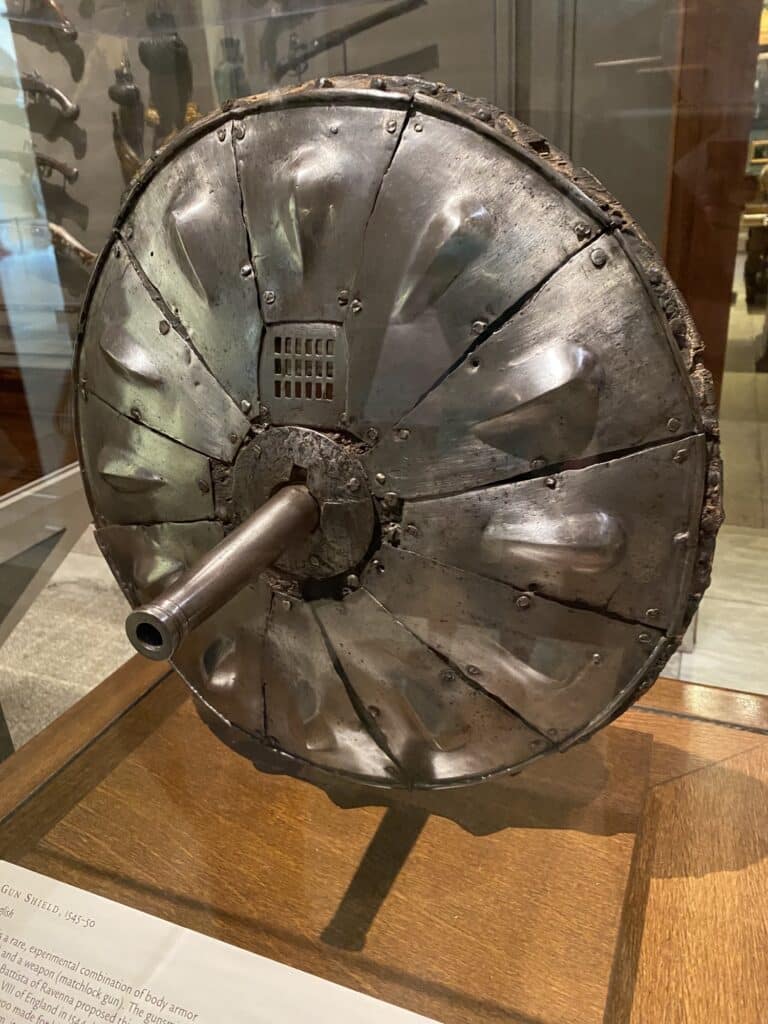
One such monarch was Henry VIII of England. Henry was always on the lookout for advantages over his continental rivals, beefing up the Royal Navy, and creating a sprawling new armoury at Greenwich. Henry was approached in 1544 by an Italian gunsmith named Giovanni Battista, who had a unique proposal. Italian condottieri mercenaries had been using a combined gun-and-shield – offering better protection to an exposed arquebusier, whilst negating the need for a heavy pavise shield planted in the ground. Why not, said Battista, have your armorers make an English version? Ever on the look out for the latest technical gadget, Henry had 100 gun-shields made for his personal retinue.
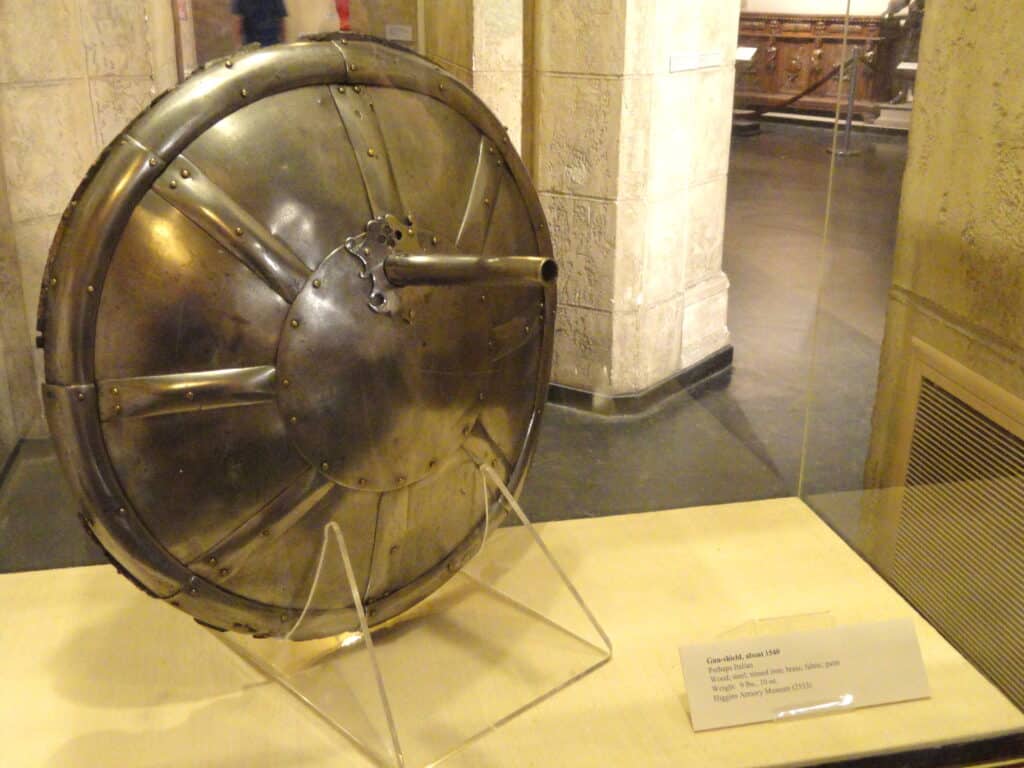
But the English designs were tragically inferior to the Italian versions: they were heavier, with thicker armor, and the gun was centered at the middle of the boss, rather than offset to the upper third as in the Italian originals. This meant that they were unwieldy and awkward, and there is no record that they were ever used in foot battles. They had a slightly longer existence as mounted weapons on board ships, where their weight was negated by a pivot mount – but they were never widely used. The gun-shield is a magnificent folly in the development of gunpowder weapons.
3. The Urumi – Now Watch Me Whip
The Indian subcontinent has never been anywhere near as isolated or ‘exotic’ as many problematic Medieval histories imply. From the conquests of Alexander of Macedon, through to the vast trading relationship between India and Europe via the Islamic world, and the Early Modern trade empires that brought a Dark Age of colonial brutality to its shores.
But Indian arms and armor developed in the Medieval era along quite different lines to their European counterparts. Different environmental, political and logistical challenges sent innovation down routes that resulted in spectacular and innovative designs – like the katar push daggers and the chakram throwing disc. One lesser known, but equally spectacular design is the urumi.
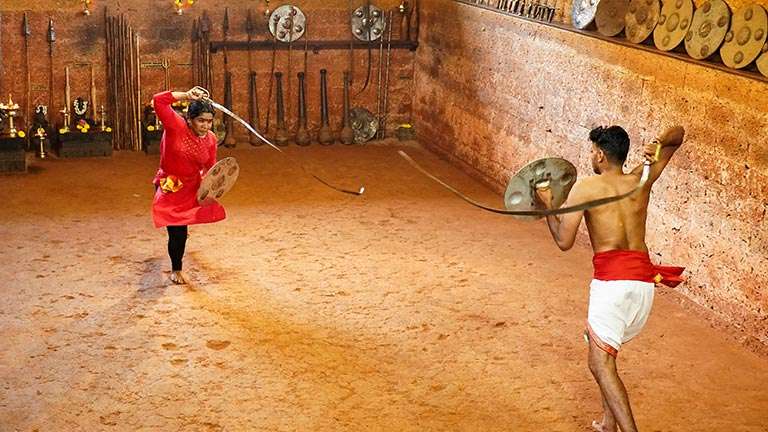
The urumi sword has an ordinary hilt, often that of a talwar with a large disc-shaped guard. But instead of a rigid saber-blade, the urumi has a narrow steel band, usually a little less than an inch in diameter, but around five feet in length, the same length as the wielder’s armspan for maximum wieldiness. This thin blade is flexible, and behaves very much like a razor-sharp steel whip. Originating in Kerala, south-west India, in the local Malayam language it is called the chuttuval – ‘coiling sword’.
Instead of simple sword-strokes, the urumi requires long, whipping strokes, and wielders would have trained intensively in the indigenous Keralan martial art Kalaripayattu to master the spinning, whirling techniques that would turn the urumi into a writhing wall of steel. The weapon was quickly adopted by other martial art forms, like Sinhalese Angampora, or Punjabi Gatka. Warriors who wielded such a sword were renowned for being able to fight multiple opponents at once. When not in use, the urumi would be wound around the waist like a belt. Variants include versions with multiple blades (as many as 32!), and sometimes they would even be dual-wielded. Truly, a fearsome weapon that was at the military apex of Keralan feudal warrior culture.
4. The Kpinga – The African Ninja Star
Almost everyone is familiar with the Japanese shuriken – the throwing-star, usually consisting of four-pointed sliver of steel. Rather than being used to kill, as in many Hollywood movies, they were used as a secondary weapon to delay or hamper an opponent in an escape. But in Medieval eastern Africa, a vibrant tradition of far deadlier throwing weapons had been flourishing: one based on spectacular craftsmanship, martial skill and ritual warfare.
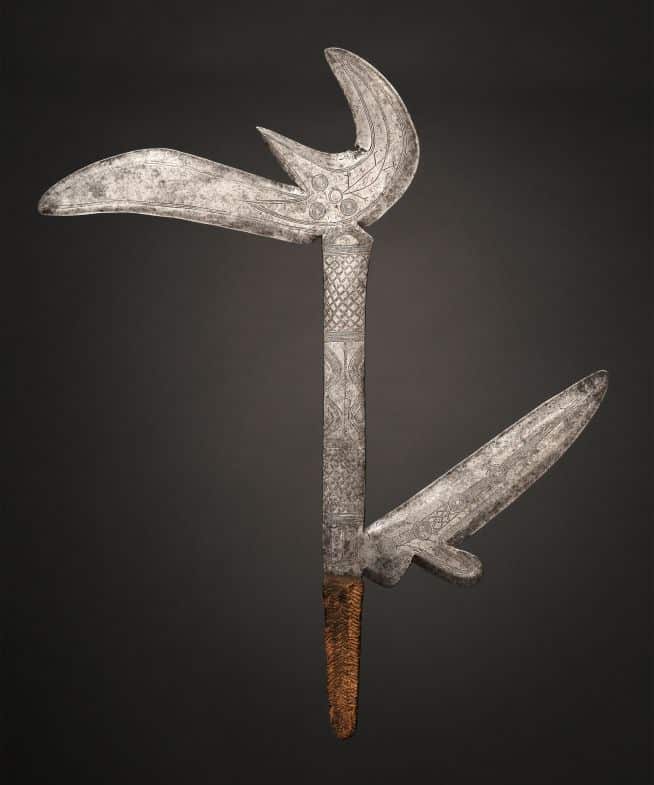
The kpinga is a jaw-dropping weapon: it is a throwing knife the size of a shortsword (around a foot in length), featuring three or four sharpened blades. Its asymmetrical design ensures that it will cut and slice no matter how it hits its target. They were made by the Zande (Azande) people, who lived in southern Egypt in the Medieval era, and who migrated southward in the Early Modern period. They were deeply imbued with feudal significance: works of iron craft were called mara ngbanga, or ‘court-metal’, bestowed by a ruler onto a loyal warrior. They were a great display of wealth due to the skill and labor required to make such metal weaponry. This status as ‘court-metal’ meant that a warrior would deliver a terrifying shout to signal that they are about to throw their kpinga, giving this weapon both a devastating psychological impact as well as physical danger. As well, due to their immense value (both metallurgically and culturally), the kpinga was used as a means of exchange: a blunted kpinga could serve as a dowry payment.
5. The Bohemian Earspoon – A Peasant Cure for a Headache
There is a long and colorful history of peasant weapons – agricultural implements and farm tools which were either simply used on the battlefield as they were, or were modified into more effective tools by blacksmiths. A ubiquitous field tool that could easily be modified for use on the battlefield was the scythe. A ‘war-scythe’ was a common pole weapon that was used to outfit peasant levies in feudal militaries from the 13th century onward, where a scythe-blade would be straightened out to project straight out from the pole, with the joint and shaft strengthened to withstand the forces of war.
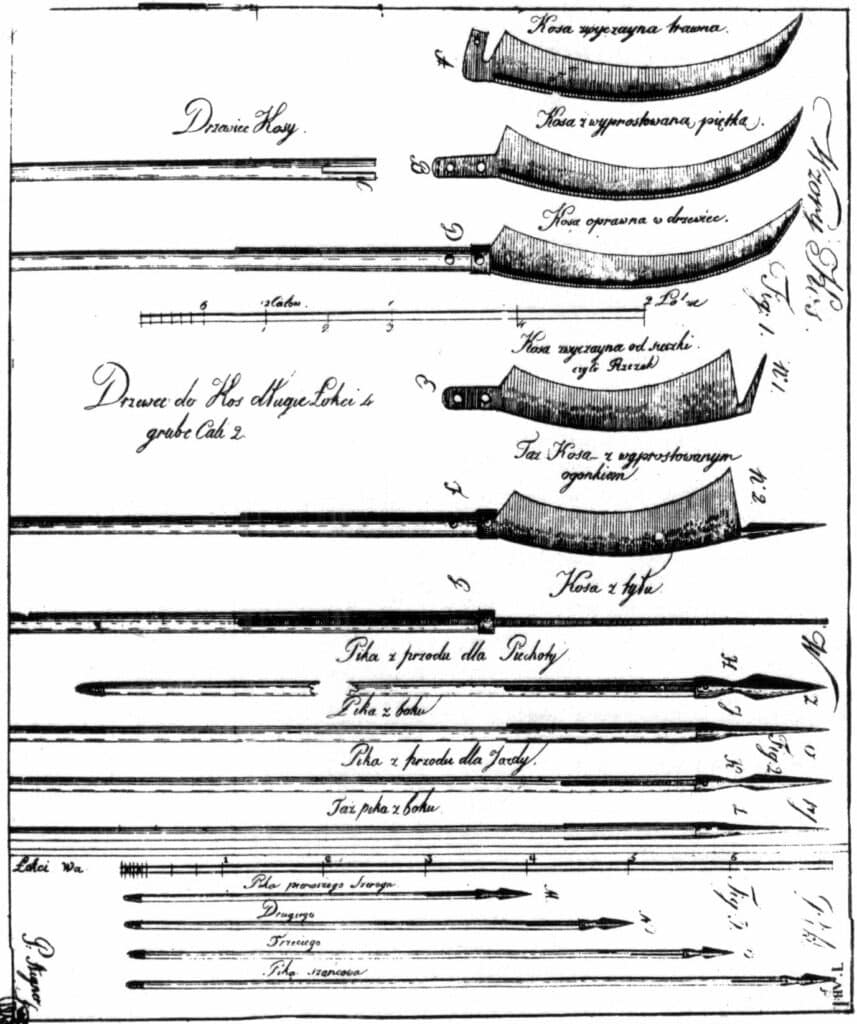
One of the most spectacular creations of a peasant army was during the Hussite Wars in 15th century Bohemia. After the execution of radical Bohemian priest Jan Hus by a Catholic tribunal, the Bohemian Hussites launched a war of independence against Sigismund of Hungary, their nominal king who had delivered Hus to the Catholics, and his Papal allies. Armies of peasants were initially raised by equipping them with the sudlice – a billhook or voulge made by affixing the sharp part of a scythe to a wooden shaft. This was a cheap and quick-to-manufacture weapon requiring minimal skill and tools, that could turn a peasant rabble into a hedge of sharp points capable of standing up against Sigismund’s Holy Roman Imperial cavalry. In a tradition of vivid naming, these ad-hoc weapons were also known as the kůsa or ‘goat’.

Later in the wars, as they dragged on into several decades, Hussite blacksmiths perfected a design known bizarrely as the ‘Bohemian earspoon’. This was a development from the kůsa-sudlice, where the spearpoint was accentuated with a pair of lugs or ‘ears’ below the head, which would stop the spear from going in too deep and getting stuck, permitting a group of pole-armed Hussites to maintain cohesion without breaking up and getting bogged down in close combat. Historians debate the origin of its wild name – it is probably an ironic reference to the tiny spoons used by the nobility to remove wax from the ear. Combined with other Hussite innovations, like the use of firearms, the tabor or ‘wagon fortress’, and even drive-by musket shootings from the backs of war wagons, the Hussite armies were almost unstoppable, driving off five separate Crusades over fourteen years.

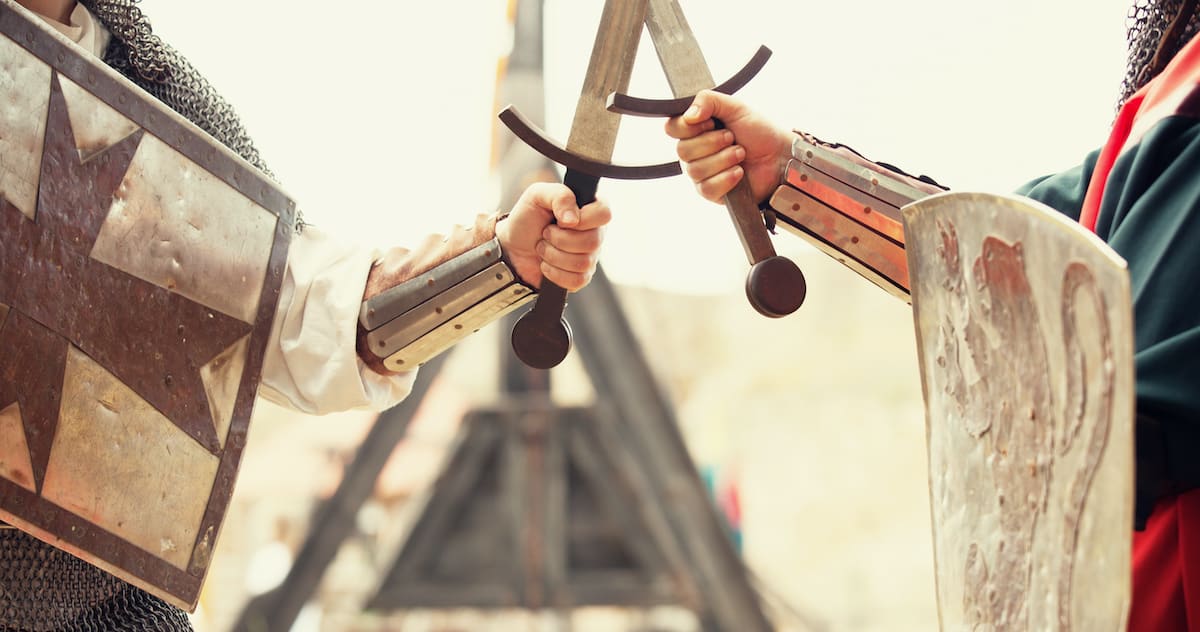 Historical Swords
Historical Swords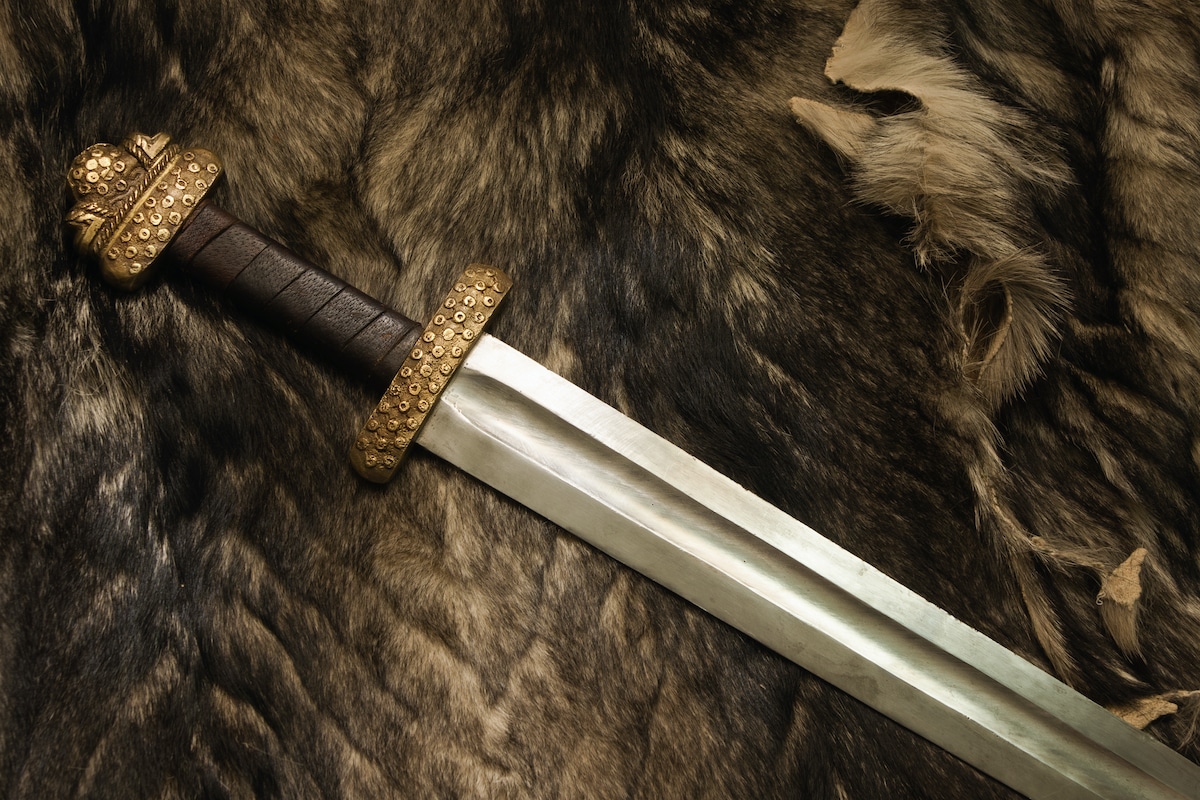 Norse & Viking Swords
Norse & Viking Swords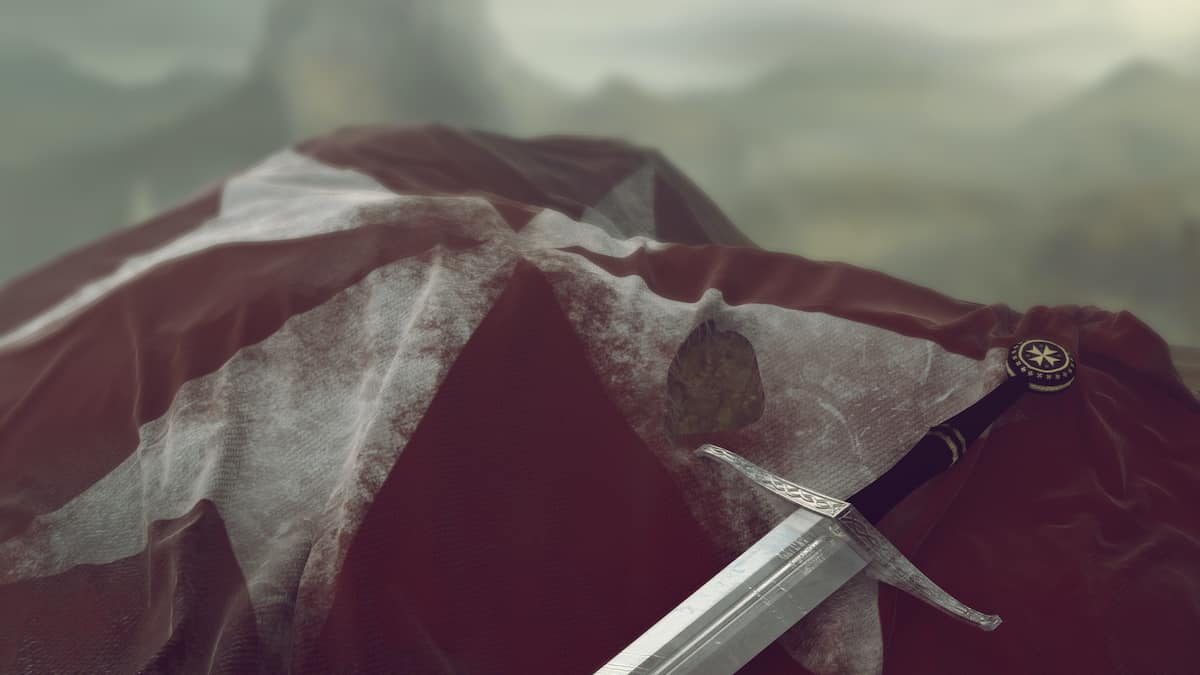 Templar Swords
Templar Swords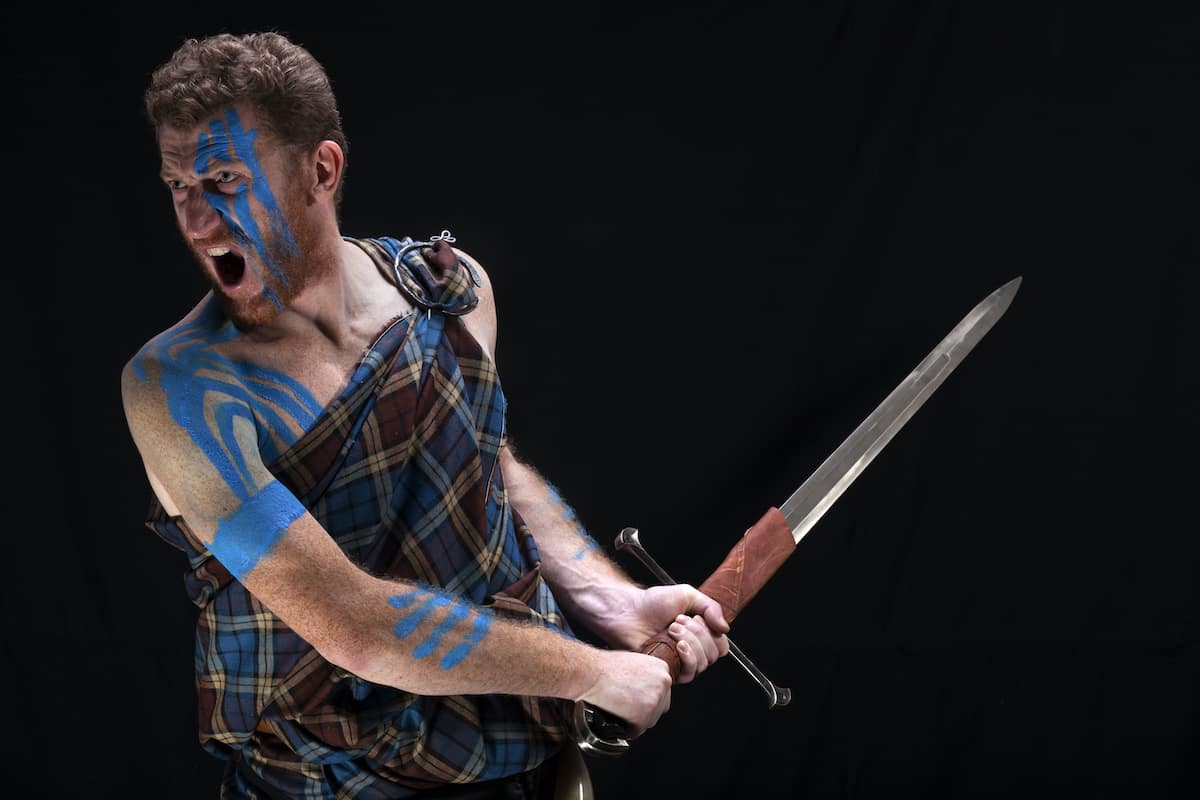 Claymore Swords
Claymore Swords Fantasy Swords
Fantasy Swords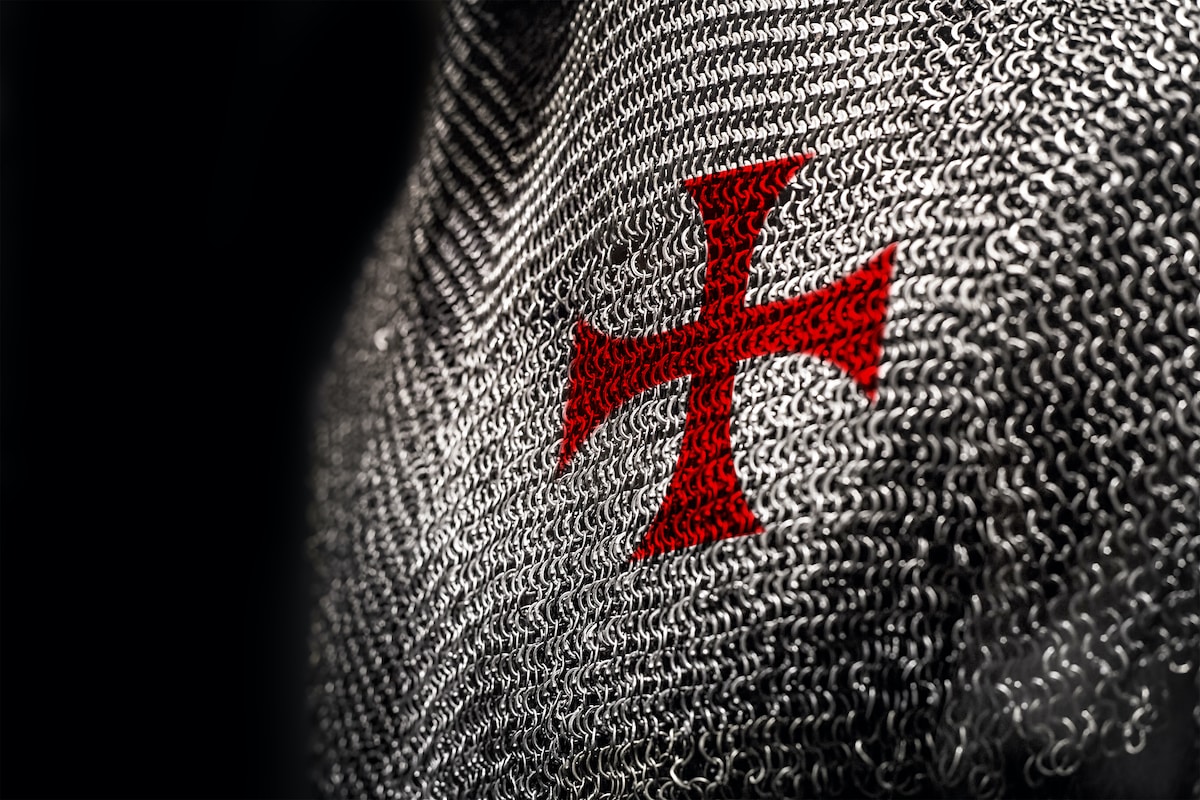 Chainmail
Chainmail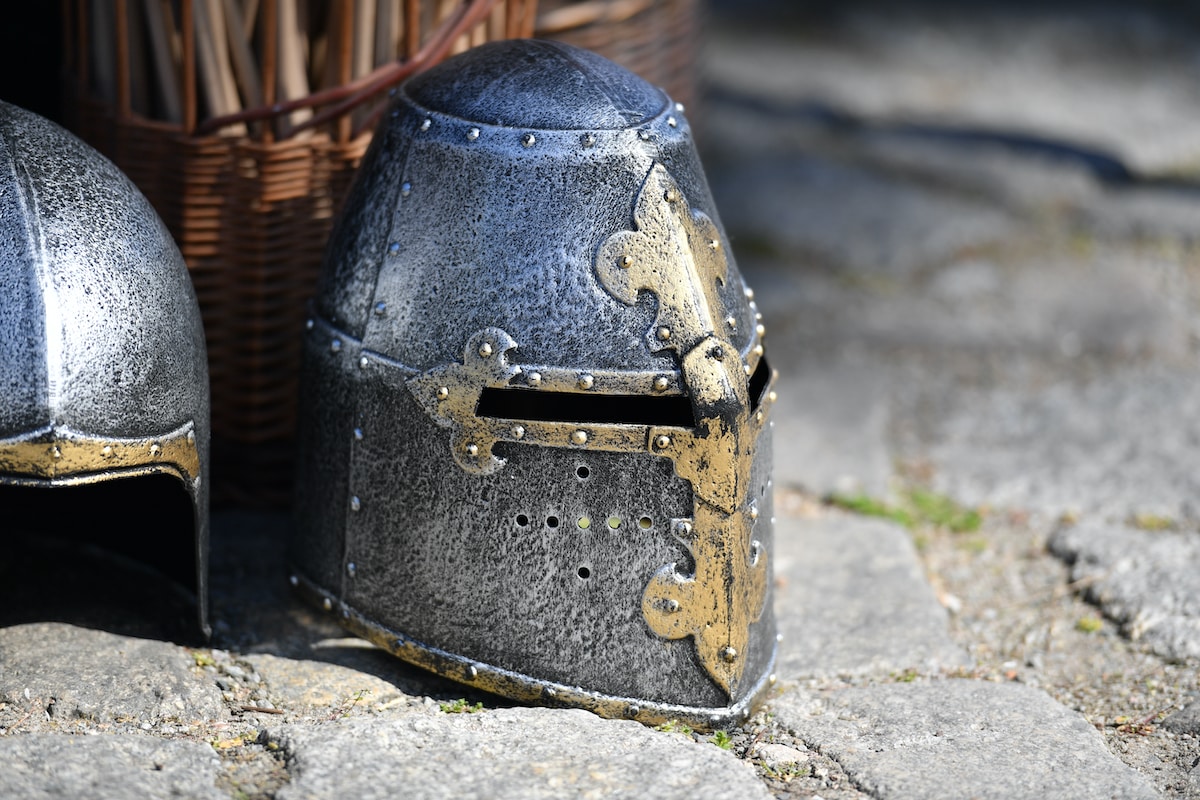 Helmets
Helmets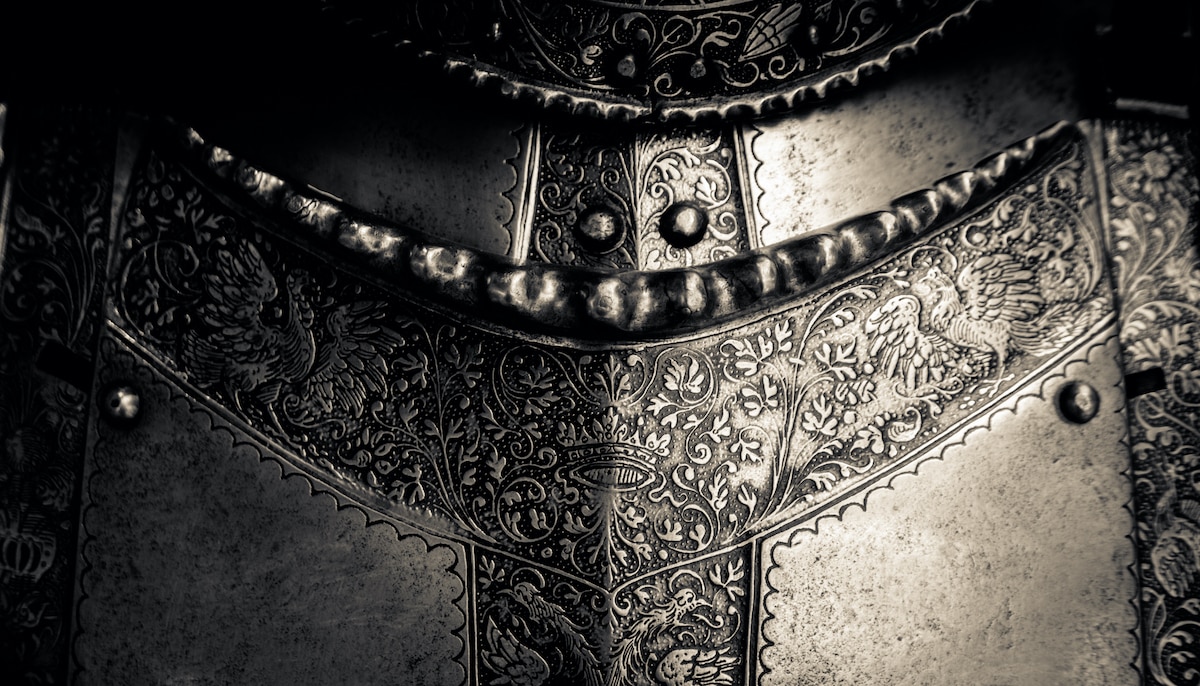 Torso Armor
Torso Armor Bracers and Arm Protection
Bracers and Arm Protection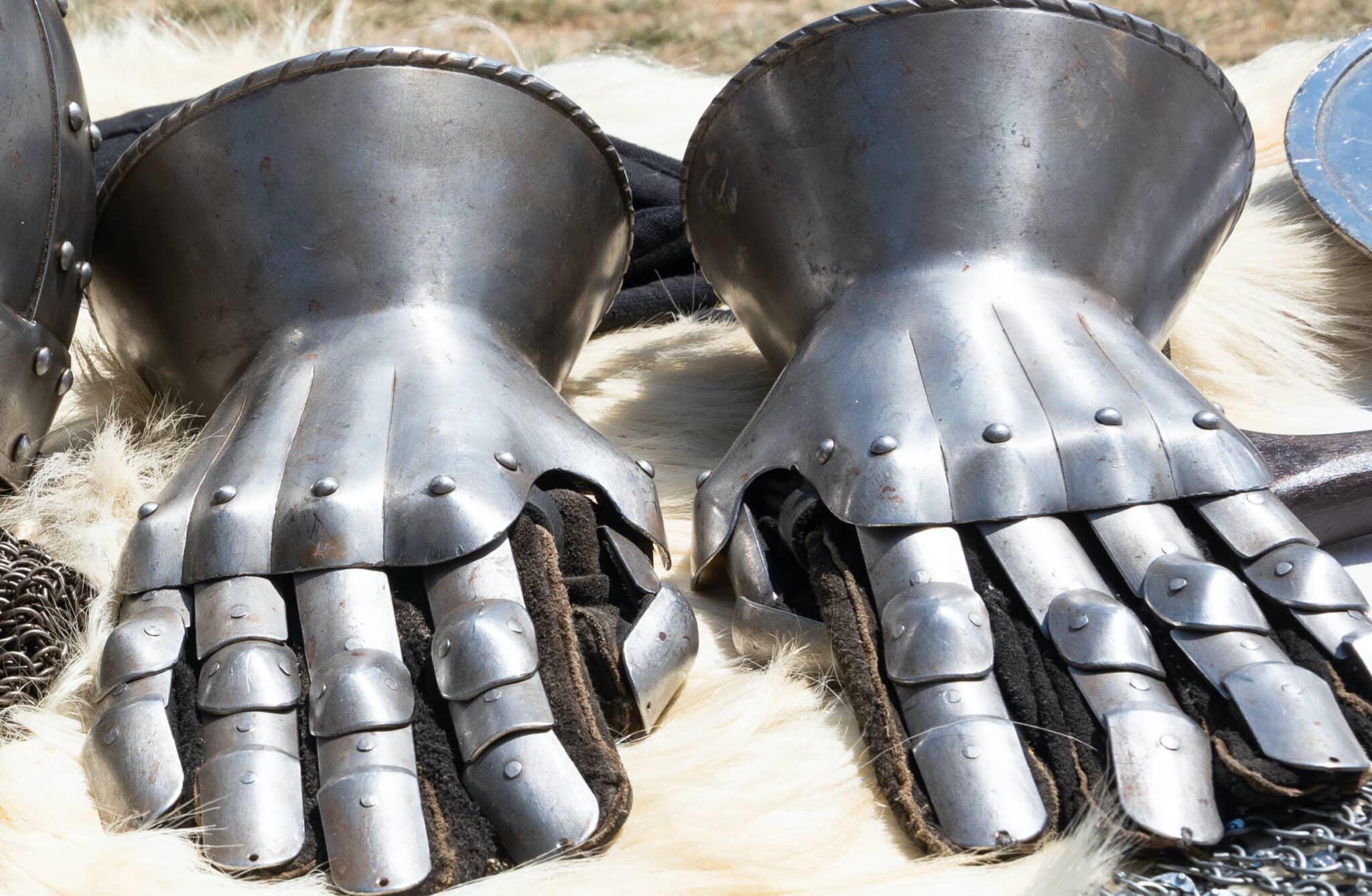 Gauntlets
Gauntlets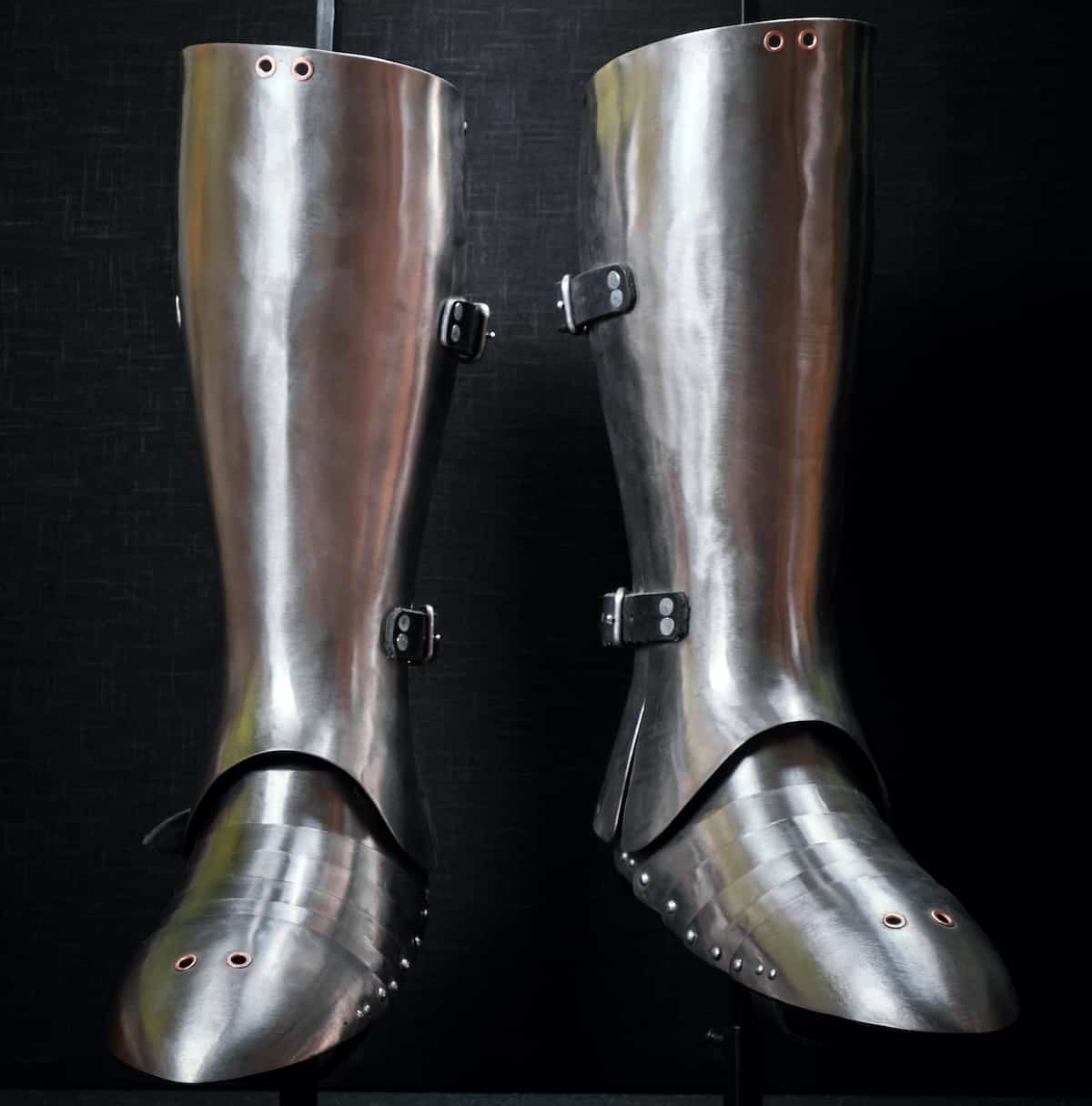 Leg Armor
Leg Armor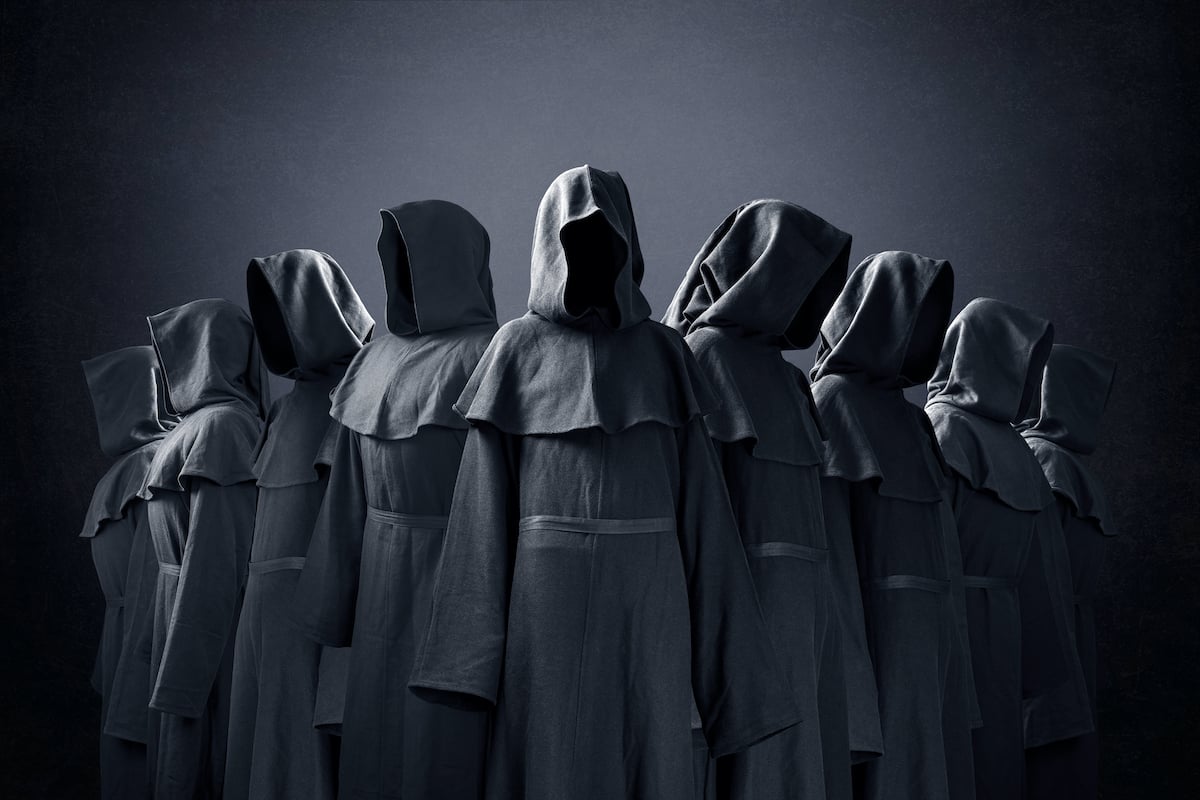 Cloaks
Cloaks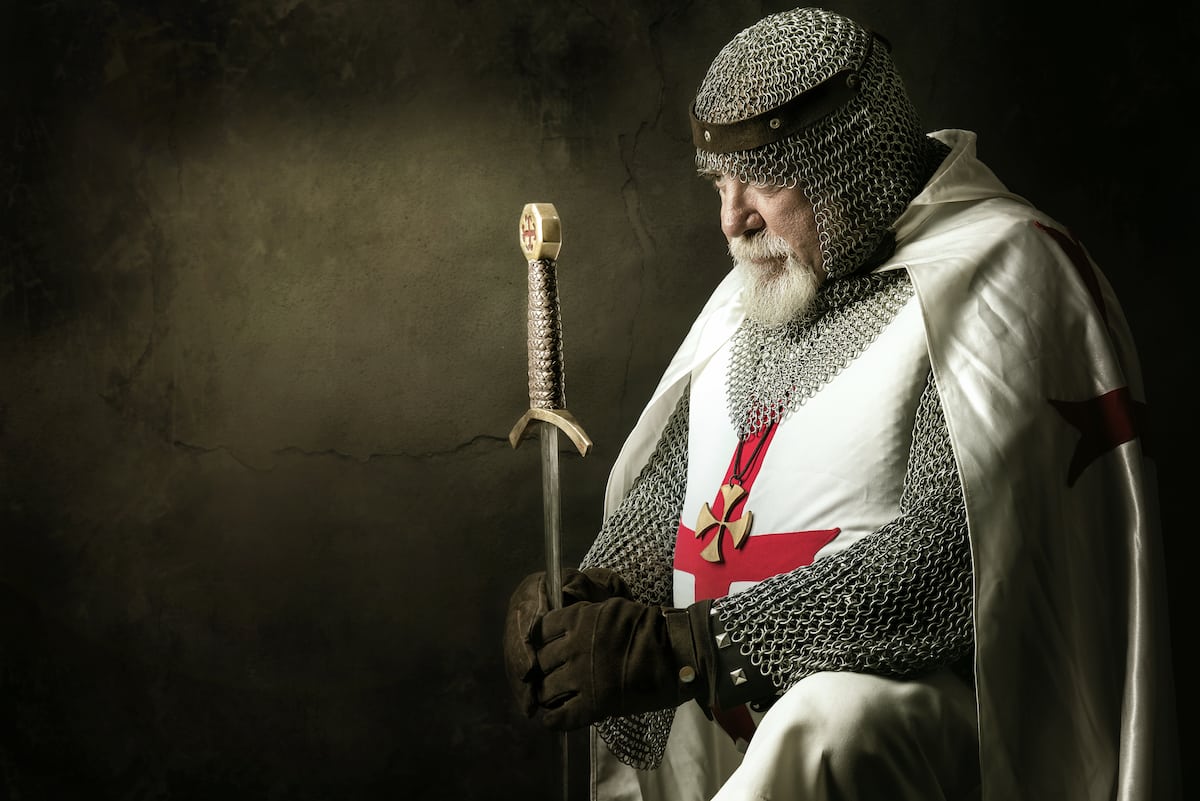 Tabards
Tabards Shirts
Shirts Tunics
Tunics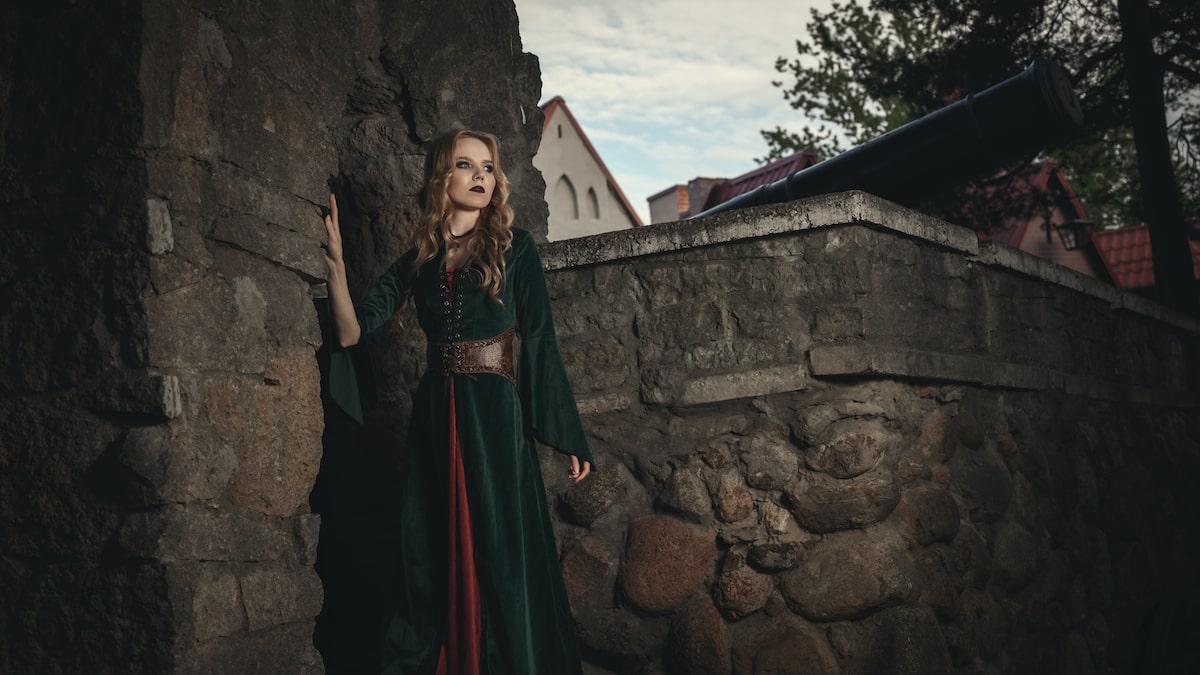 Dresses
Dresses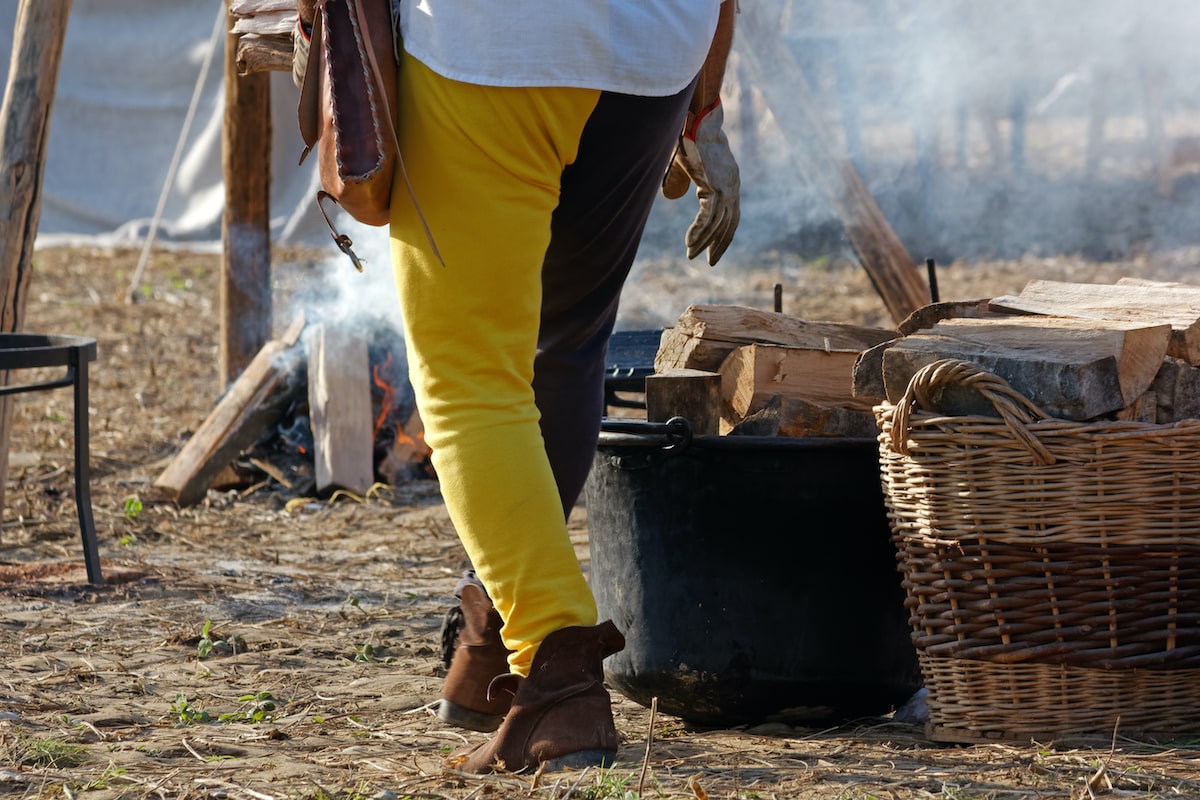 Pants
Pants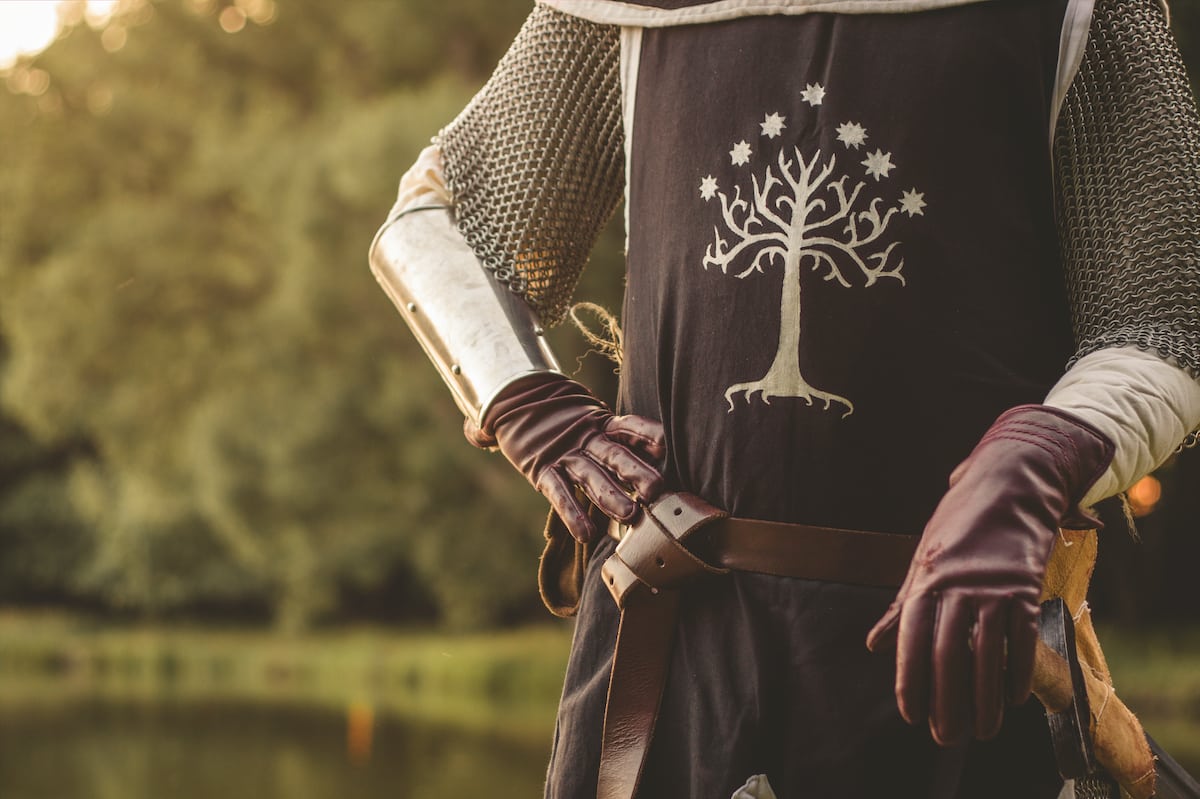 Gloves
Gloves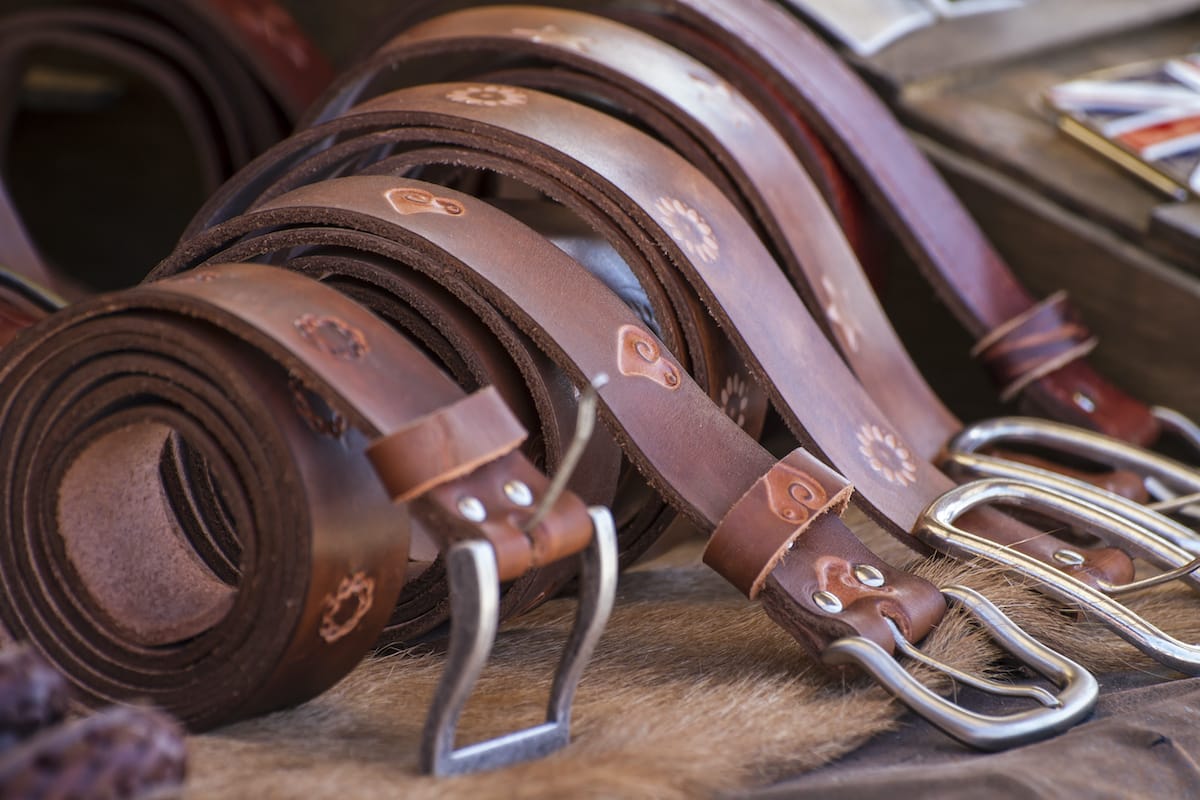 Belts
Belts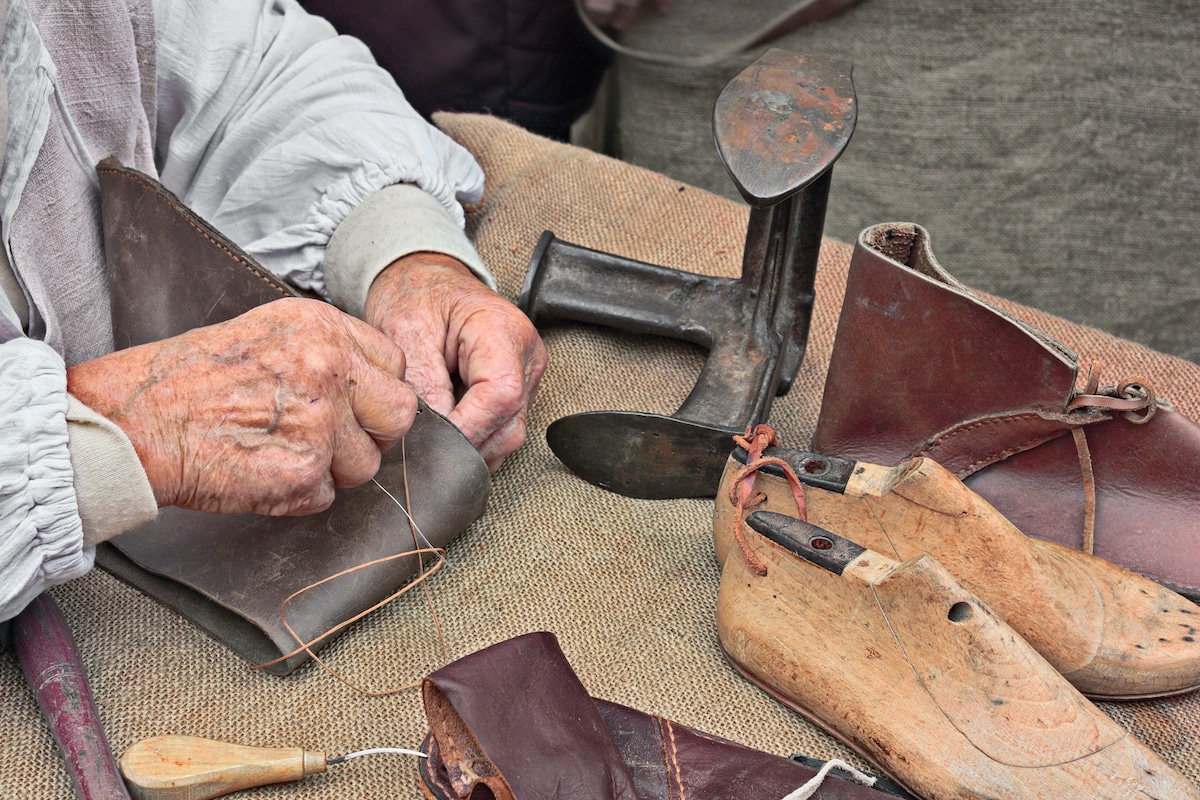 Shoes
Shoes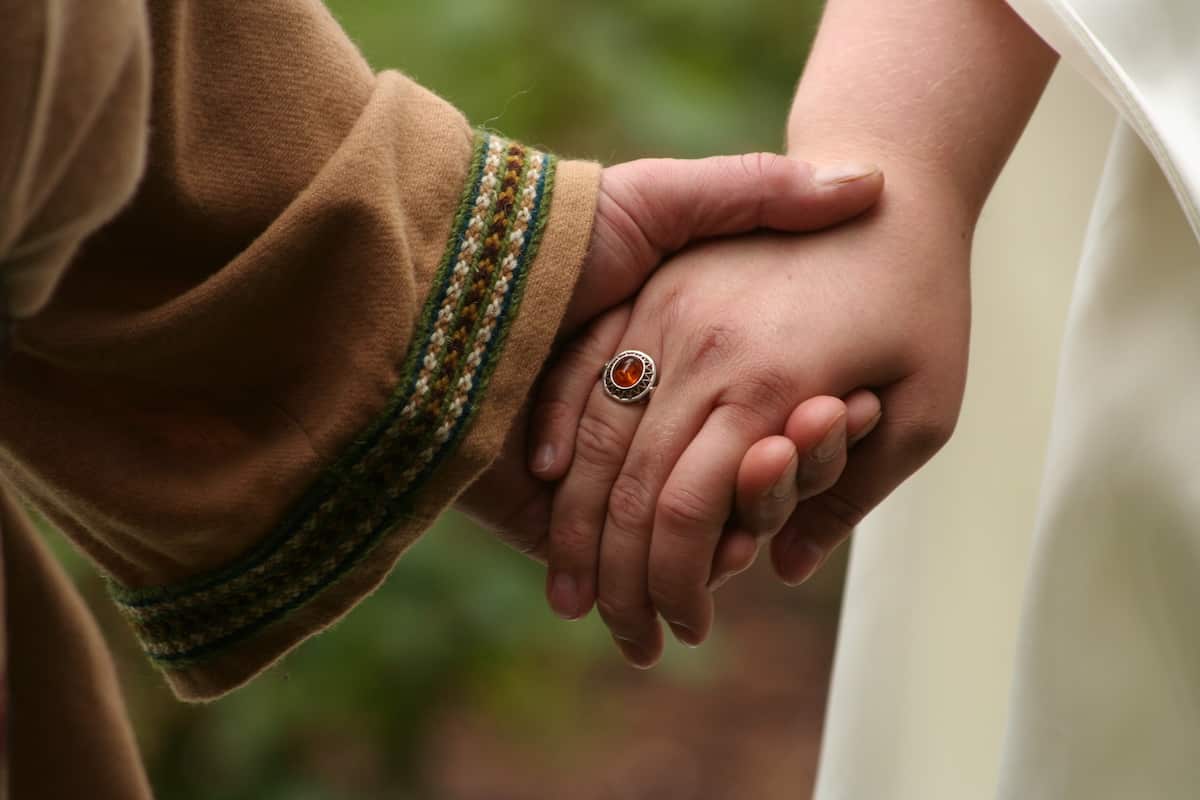 Rings
Rings Necklaces & Pendants
Necklaces & Pendants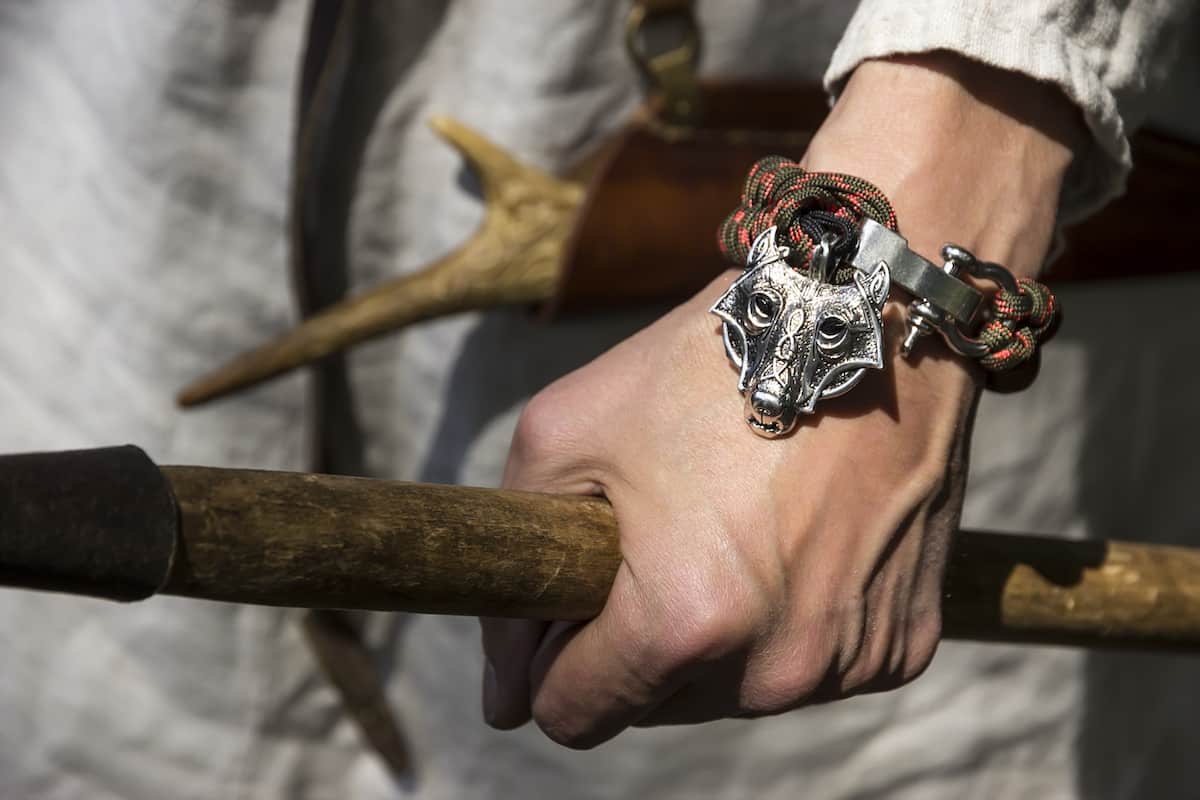 Bracelets
Bracelets


